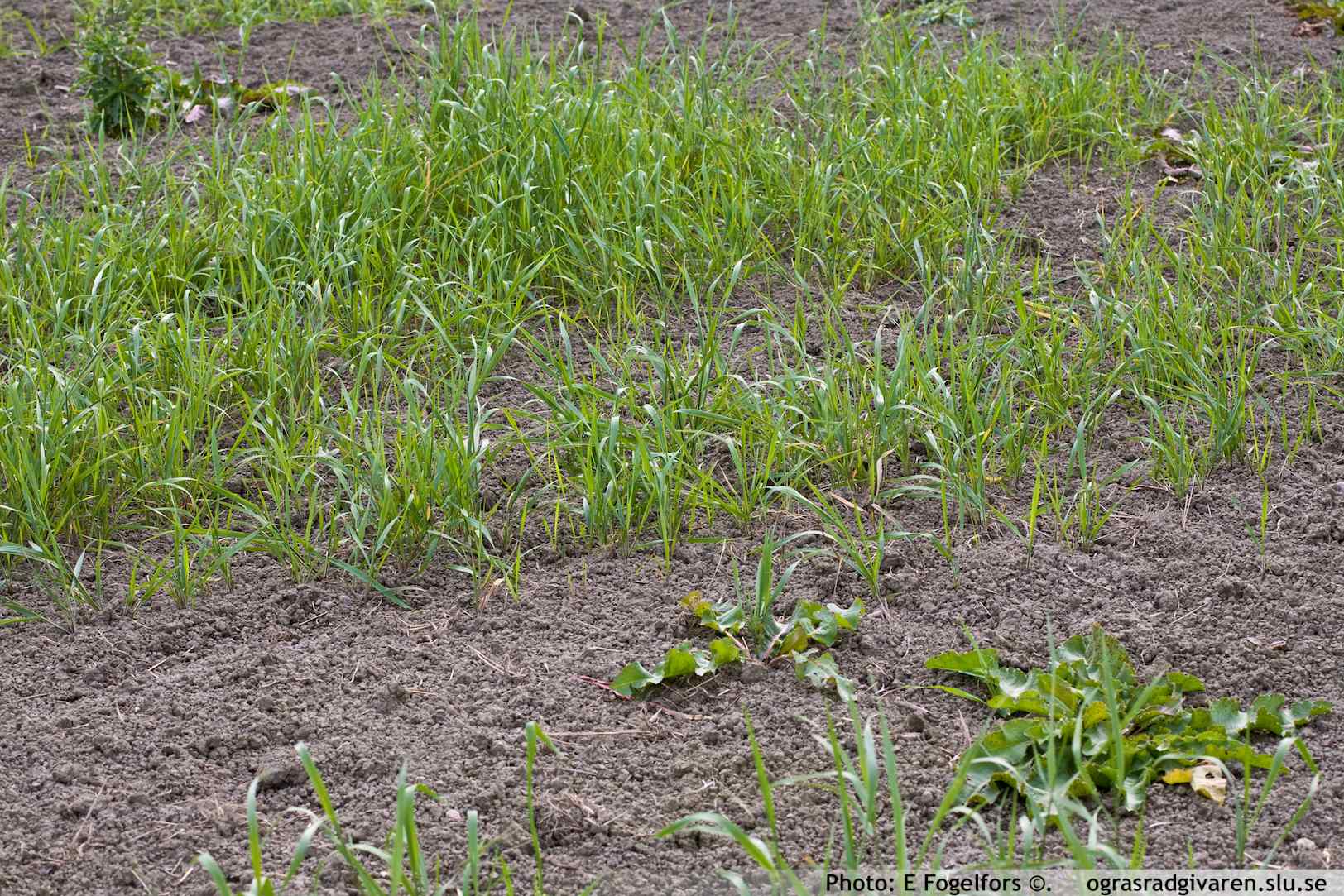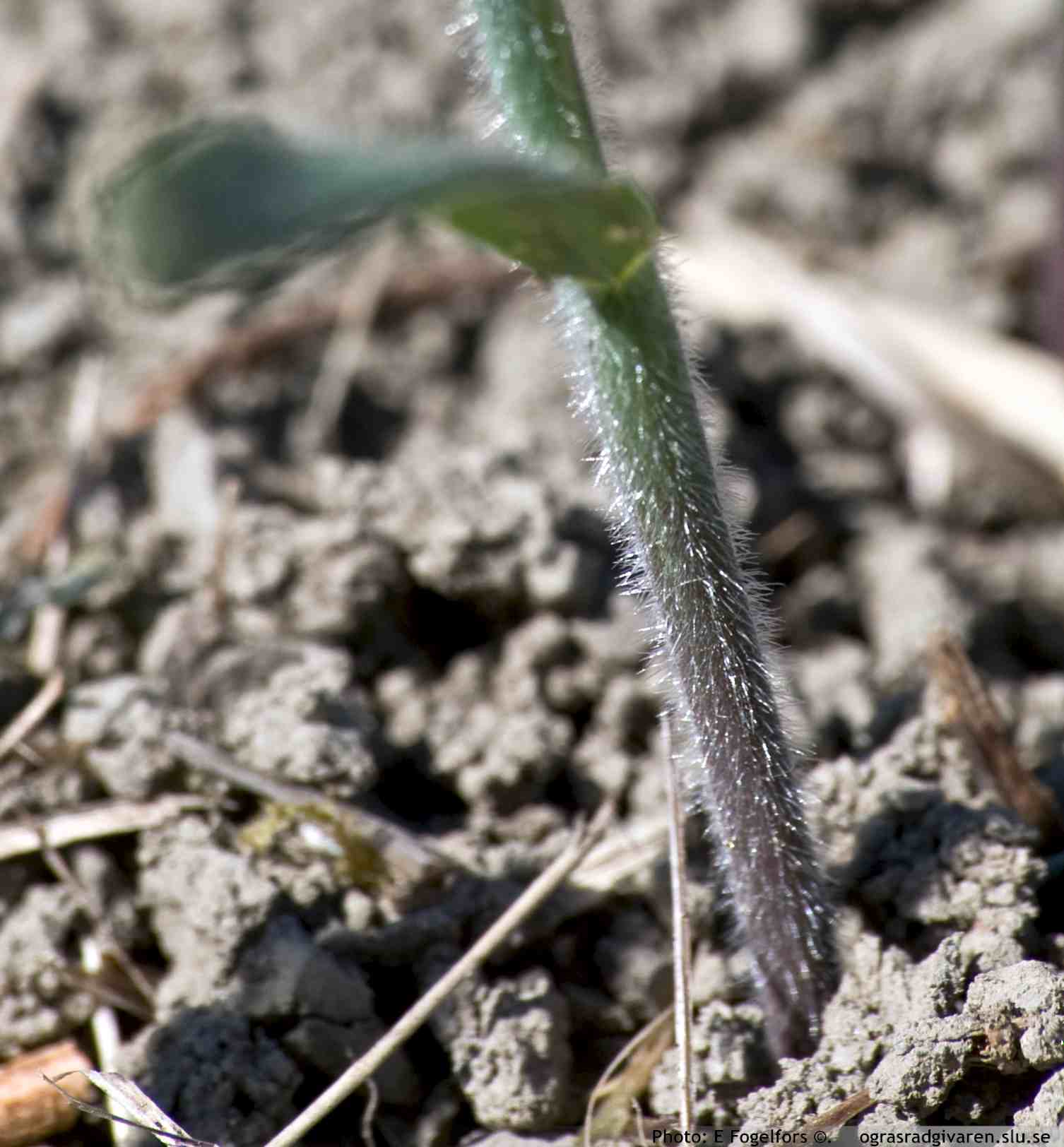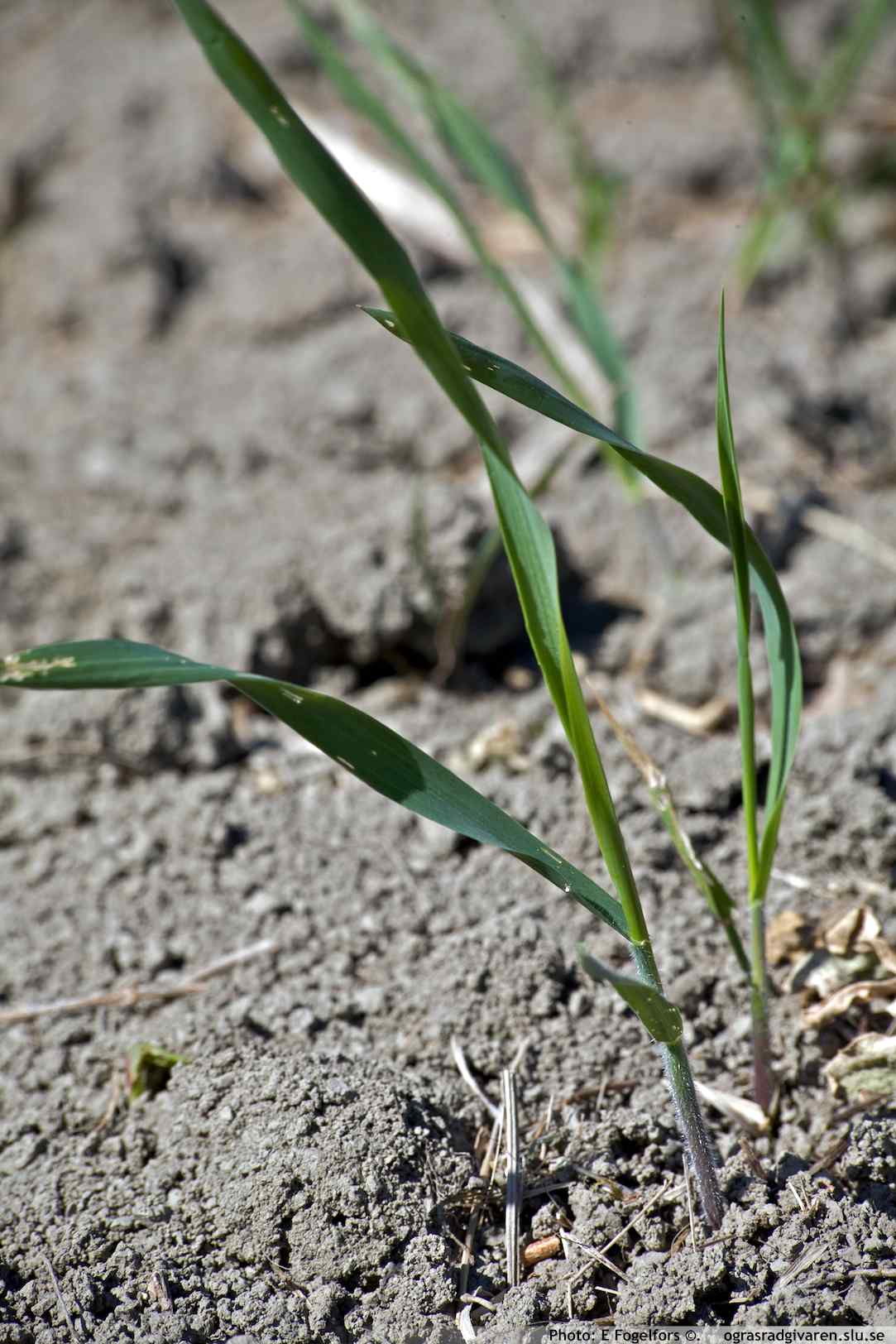Common Couch
(Elymus repens (L.) Gould) Fam:. Poaceae
![]() Almindelig Kvik,
Almindelig Kvik,
![]() Harilik orashein,
Harilik orashein,
![]() Juolavehnä,
Juolavehnä,
![]() Kweek,
Kweek,
![]() Husapuntur,
Husapuntur,
![]() Ložnu varpata,
Ložnu varpata,
![]() Paprastasis varputis,
Paprastasis varputis,
![]() Kveke,
Kveke,
![]() Perz właściwy,
Perz właściwy,
![]() Пырей ползучий,
Пырей ползучий,
![]() Gewöhnliche Quecke,
Gewöhnliche Quecke,
![]() Kvickrot
Kvickrot
General preventative measures:
-
Certified seed.
- A varied crop rotation with crops that allow repeated soil tillage (e.g. potatoes, row crops) and leys with 2-3 cuts per year.
- Competitive crops and varieties (e.g. winter rye, green manure crops). Crops such as maize, linseed, lupin, peas in pure crops and vegetable crops favour weeds. Poorly overwintered crops should be re-seeded or a green manure crop ley can be sown.
- When growing beans and peas, cultivate the field in the previous autumn and then in the following autumn after harvest. These cultivations are best carried out when most shoots have reached the 3-4 leaf stage.
- Plough in spring if possible in terms of soil conditions and sow as soon as possible after spring ploughing.
Control measures:
- Break-up of couchgrass runners by e.g. repeated stubble cultivations when most shoots have reached the 3-4 leaf stage (compensation point, see below). Begin directly after early harvested crops such as grain crops, ley seed crops and winter oilseed rape, end with late, deep and uniform ploughing. If spring ploughing is possible, this can provide a better control effect. This starvation strategy requires around 3 months.
- After ploughing under a full or half fallow period, carry out repeated shallow cultivations when couchgrass shoots have developed 3-4 leaves on average. The plant’s energy reserves are at their lowest then, since more energy is used during this first phase of development than is supplied through photosynthesis. The energy balance or net assimilation in the plant then becomes positive as the compensation point (see below) is passed, and repeated cutting or tillage at this stage means that the plant is gradually starved out. Since the starvation strategy requires around 3 months, a full fallow gives the best effect on couchgrass if the field is to be autumn-sown, but otherwise both types of fallow have similar effects. A ‘mini summer fallow’ is for obvious reasons less effective than a whole or half fallow in terms of controlling couchgrass.
- Harrowing and desiccation of fallow: approx. 2 weeks of intensive drying are required. Rowing and removal are particularly important on peat soils.
- Repeated cutting of green manure crops and forage leys. Optimal effects are achieved by 2-3 cuts. With 4 or more cuts the ley crop is pressurised too much and its competitive effects can be lowered. Cutting does not give as good effects as stubble cultivation.
- Animals, e.g. pigs, can be used in weed control because runners are rooted up and dry out. Runners are not eaten preferentially, as pointed out by Carl Linnaeus in Svensk Flora (1755): "swine do not eat the roots, despite the belief of farmers" (click below).
- Chemical control (click below).
|
Garden
|
Control/species (click):
Handrensning eller uppgrävning


